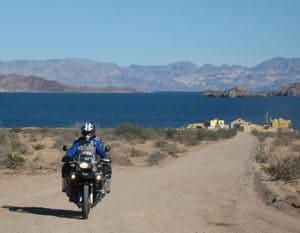
A Baja Motorcycle trip, with a Woman at the Helm
By Jamie Winkelman
Ask Americans which foreign countries they have visited, and the clear winners are close by — Canada and Mexico. Each tallies more US visitors than all of Europe.
But how many travelers ever push past the border towns and resorts, beyond the tourists and fellow Americans?
Count Me In!
I just returned from a whirlwind motorcycle tour through Baja, California. Though Mexico is just a short hop across the border, it is worlds away from the United States.
Still, the rustic simplicity south of the border is a refreshing reminder of what is important in life. Good friends, good food, good times!
Baja Basics
The Baja peninsula is a long, narrow spit of land cleft from mainland Mexico by the San Andreas Fault. Two states comprise the peninsula: Baja California and Baja California Sur.
Though portions of the peninsula support agriculture, most of Baja is remote, desolate, and largely unpopulated desert. In many towns, amenities such as hot water and electricity are absent. On the other hand, cell service is practically everywhere.
The best way to see Baja is on a motorcycle, preferably one equipped for off-road riding. On a bike, you immerse yourself in the scenery.
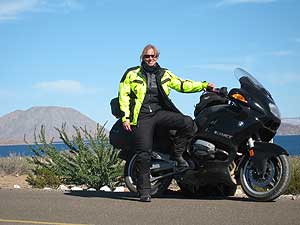
You smell salt in the air, vegetables in the fields, and every taco shop you pass. You sense changes in coastal coolness and inland warmth. And perhaps because you are more unusual and less threatening on a bike, you are quickly accepted by the locals.
Recommended Border Crossing — Tecate
Border crossings can cramp a carefree getaway. I avoid the lines and bypass the mayhem of Tijuana (the world’s busiest port of entry) by crossing inland at Tecate and then threading my way through town to Mexico Highway 3.
TIP: Beware of hidden stop signs. Many are extremely difficult to see and often disregarded by local drivers. Do not be tempted to follow their lead — the cops watch foreigners closely!
Mexico Highway 3 follows the Ruta de Vinicola through the Valle de Guadalupe, Mexico’s up-and-coming wine country.
Domecq and L.A. Cetto produce nearly 75% of the valley’s wines, but other nearby wineries including Bodega Santo Tomas, Château Camou, and Monte Xanic also turn out award-winning, often underrated, wines.

Beyond the Valle de Guadalupe, the bustling port of Ensenada sports a fun collection of bars and cafés that cater to the cruise ship crowds.
Punta Banda Peninsula and La Bufadora
South of Ensenada, Mexico Highway 1 intersects Baja California 23. The neatly paved road crosses the Punta Banda peninsula through fertile vegetable farms. Countless stands with huge pots of steaming tamales display sun-speckled shelves of homemade olives and colorful pickled peppers in an array of reused jars and bottles.
Baja California 23 terminates at the tip of Punta Banda where La Bufadora shoots seafoam 80 feet skyward. La bufadora means “the blowhole” and aptly describes this spectacular marine geyser.
In a unique but natural phenomenon, the ocean surges into a deep underwater canyon and then erupts from a cliff-side cave in a showy explosion of water and noise.
Looking across the bay and beyond to Ensenada, the view from Motel La Bufadora (telephone: 011-52-646-154-2924) is extraordinary. Though unheated, the rooms are clean (some recently remodeled) and include a private bath with towels and soap, but no hot water, for $35 US.

TIP: If traveling by motorcycle, pack a lock. It may not be necessary, but it’s a small price to pay for a little extra reassurance.
You can stock up at the Tienda de licores down the street, and then BYOB and feast on tacos and quesadillas at Danny’s. Around 3:00 am, listen up for an uncanny rendition of “Happy Birthday!” loudly crooned by the neighborhood roosters.
A Taste of San Vicente
Mexico Highway 1 winds through mountain passes and across valley floors striped with vineyards and cactus farms. There is a good fuel stop in Santo Tomas, with baked goods and Cuban cigars.
In San Vicente, open-air birria stands line the street. Birria is tender marinated meat seasoned with a complex sauce made from dried chiles, herbs, and spices and served with a rich broth. Women form fresh tortillas and warm them on comals (griddles), while others dole out steaming bowls of birria.
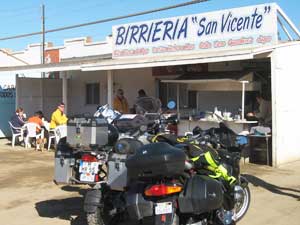
Shades of San Quintín
Leaving the birrierias behind, ramshackle rows of fish taco stands tease the way into San Quintín. In town, brilliant shades of primaries and pastels tangle together in undetermined stages of construction and reconstruction. Purple leans lazily against teal, and orange uproariously abuts chartreuse.
San Quintín boasts a cornucopia of street-side eateries and paleterias (Mexican ice cream parlors) plus hotels, markets, and two banks. South of town, fields stretch to the horizon in vast expanses of commercially farmed strawberries and tomatoes.
TIP: Bring plenty of pesos; most local hotels and eateries only accept cash. Banks are rare, and ATMs are often out of order. Stash your cash in various places, so if anyone confronts you, not all your money is in one place.
Transpeninsular Turn at El Rosario
A Pemex gas station marks the entrance to El Rosario, and at the sharp curve that turns east, Mama Espinosa’s famous culinary landmark sits behind old windows covered with stickers from touring bikes and motorists.

TIP: If you bypass the Pemex station in El Rosario, a dusty sign on the east side of town casually reminds you that the next gas is 314 km (195 miles) away. Stretches between stations can be long and most assuredly desolate.
Approaching Cataviña, huge boulders loom across the desert, shaped by the wind and strewn in random piles. Copious cacti somehow grow out of solid rock.
Cataviña in Living Color
Cataviña is not much more than a wide spot in the road flanked by two hotels. At the north end of town, Mi Cabañas Linda offers a comfortable resting spot for $35 US. The rustic rooms are clean but painted a perplexing Pepto Bismol pink. The hotel is powered solely by a generator and has no phones or hot water.
The house specialty in the hotel’s homey dining room is tacos dorados — deliciously fried tacos, filled with carne and served with frijoles.
TIP: Plan on stopping early, since hotels often sell out as night approaches. You won’t be the only one who wants to be off the road by dark!
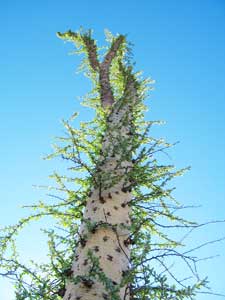
Leaving Cataviña, the highway is lined with magnificent cacti unique to this area of the Baja desert, including the cardón (the world’s largest) and the boojum or cirio. While the cardón resembles an oversize saguaro, the boojum is one weird-looking plant, often described as a giant upside-down carrot.
Funky Fuel Stop at the Crossroads
A deserted Pemex station rests at the junction of Mexico Highway 1 and the road to Bahía de Los Angeles. Capitalizing on the dilemma of naïve Baja travelers, enterprising Mexicans sell fuel from 55-gallon drums. After weighing the risk of unknown fuel against no fuel at all, most folks opt for the fuel.
A fellow vigorously hand-pumps gasolina from a rusty drum in the back of his pickup into a beat-up jerry can. Then he hops down and transfers the fuel from the jerry can into your tank. At roughly $4 per gallon, this experience is worth every penny.
Bahía de Los Angeles
During a quick descent out of the mountains, you can catch your first glimpse of the dazzling sapphire blue of the Sea of Cortez and the tan-colored islands that pepper this part of the coast.
If you are running low on pesos, Costa del Sol (telephone: 011-52-200-124-9110, e-mail) accepts credit and debit cards. The courtyard is sunny and inviting, and for $50 US, the rooms are nothing short of decadent — spacious, spotless, and beautifully furnished.
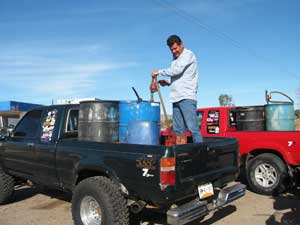
The hotel houses a fine restaurant featuring Mexican wine and home-style cooking, but aromas from the taco shop next door just might entice you out of your courtyard comfort.
TIP: Fuel is available at two Pemex stations in Bahía de Los Angeles. If you stay at Costa del Sol, you can gas up at the yellow Pemex and charge it to your hotel bill; the two businesses share the same owners.
In Reverse
Retracing the route to Mexico Highway 1, through Cataviña, and on to El Rosario is a whole new experience in the opposite direction. With time for lunch at Mama Espinosa’s, you can make San Vicente by dusk.
Check out the Hotel La Palma (telephone: 011-52-646-165-6846), aptly named for the lone palm tree that snakes its way more than 50 feet skyward through the hotel roof.
TIP: If cool weather is forecast when you plan to travel south, pack a lightweight sleeping bag. It’s a cheap backup for the lack of heating, the missing blanket, or even linens have gone AWOL.
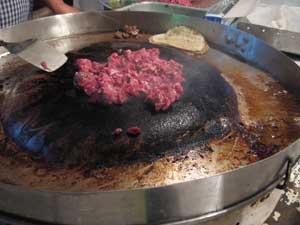
Parked in front of the hotel, a mobile taco cart is equipped with an unusual propane-fired cooking contraption resembling a giant wok. The curved bottom is pushed up to form a convex griddle in the middle, while the edge of the “wok” forms a concentric lip around the outside to collect drippings for basting the meat.
On Sunday nights in San Vicente, the dirt frontage path along the highway is busy and congested in both directions. The vehicles are loaded with beer-waving teenagers and young adults, just cruising the strip.
Save for the few large wineries that are difficult to disguise, the trek through the Valle de Guadalupe is dramatically different heading northbound. Before exiting the valley, plan to stop at a roadside stand for local wine and olive oil.
The Land of the Free
The new border crossing at Tecate skirts around the backside of town and then parallels the massive border fence recently installed by the United States government. Electronic signals meter drivers to the border under the sleek surveillance of high-tech gadgetry.

In a blink, you are back in the land of the free, where you can drink the water, flip a switch, and know that, in the big scheme of things, there is justice for all.
Then again, it’s hard to find the quintessential taco!
Roads and Driving
There is only one paved road that traverses the entire Baja peninsula — Mexico Highway 1. You will never quite appreciate the marvel of American engineering until you navigate the narrow roads of Baja.
They usually lack shoulders and medians but generously offer blind crests followed by an unannounced decreasing-radius curve whose direction is a mystery until you are — with any luck — in the turn.
Vados, or wide dips in the road, are common in Baja, often found near arroyos or dry river crossings. Topes are almost the reverse of vados. A bit like rumble strips, and about as subtle as a loose collection of bowling pins, topes are essentially speed bumps in the middle of the highway used to slow traffic approaching a town, a school, or a pedestrian crossing.

Passing zones, indicated by a broken yellow line, are virtually nonexistent. Slower Baja travelers use their left turn signal to notify trailing vehicles that it is safe to pass.
Before You Go
US insurance is invalid in Mexico. Although Mexican law does not require drivers to carry insurance, all drivers must have the means to pay for damages incurred by an accident. Without insurance, you could be detained in a Mexican jail.
You can purchase Mexico auto insurance online through AAA or at your local AAA office. If you neglect to prepurchase insurance before you leave, a small convenience store just this side of the Tecate border sells Mexico travel insurance.
Tourist cards may or may not be required, depending on how far into Mexico you plan to travel and how long you plan to stay. With a tourist card, you can travel for up to seven days free of charge (geographic restrictions apply). But don’t forget — you need your passport to get back into the United States.

Jamie Winkelman, from Southern California, is an adventurous freelance writer with a passion for travel, food, and music.
Airline Miles and Points: Going to Cooler Places for Less
Eurail Passes: What to Know about Buying a Europe Train Pass
- These 9 U.S. National Parks Require Reservations in 2024 - April 17, 2024
- Take a Hike in Olympic National Park - April 17, 2024
- The Wild Mississippi: 2340 Miles Across Ten States - April 8, 2024


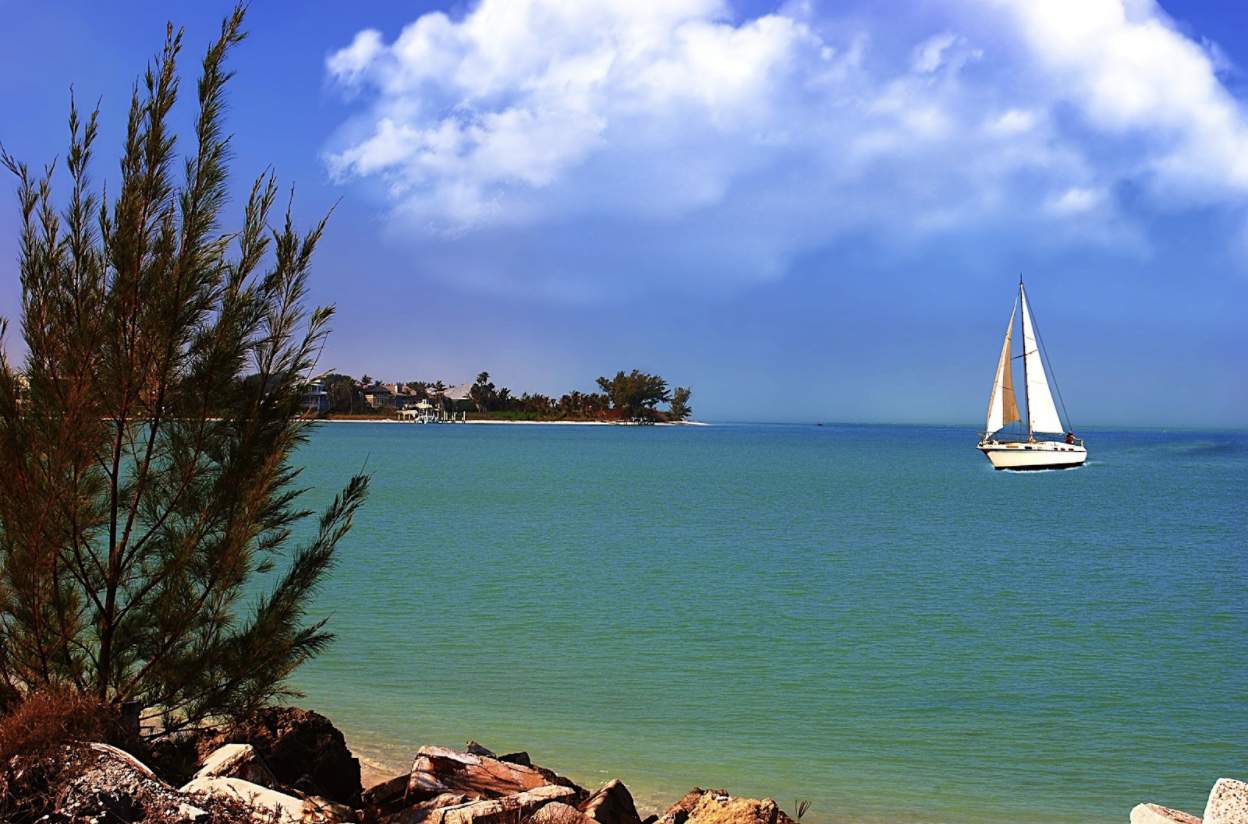
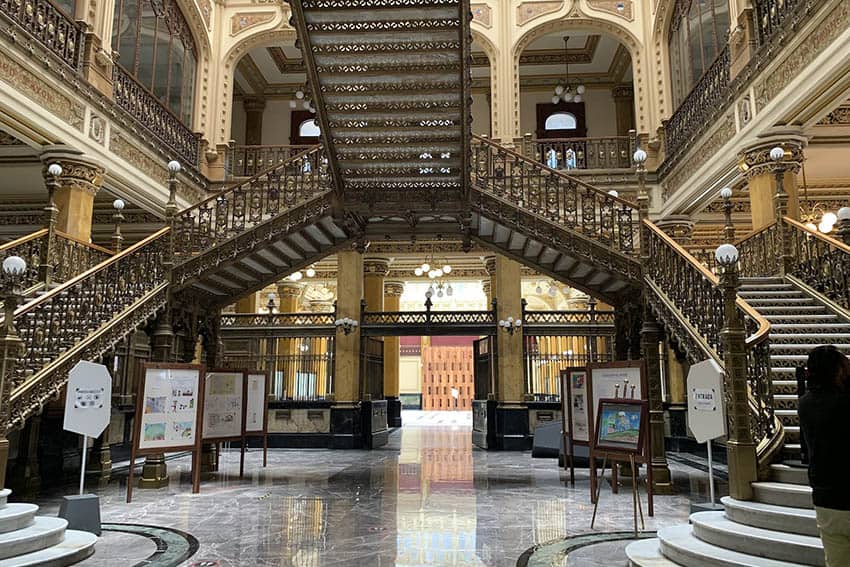
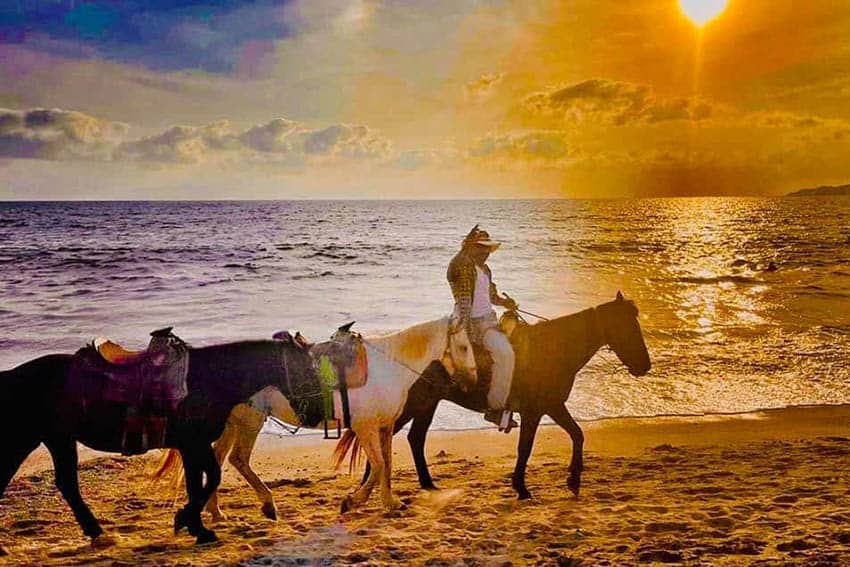

Thanks for the info, I have ridden many times through some of these places and your advise is spot on.
Awesome article . I am planning to ride from South Florida to Baja Mexico in a few weeks. Are the roads and towns in this route paved, meaning: HARLEY friendly LOL?
Would you comment what kind of weather I will encounter in the winter?
Thanks so much
Hi! Sounds amazing. How many days did this itenerary take?